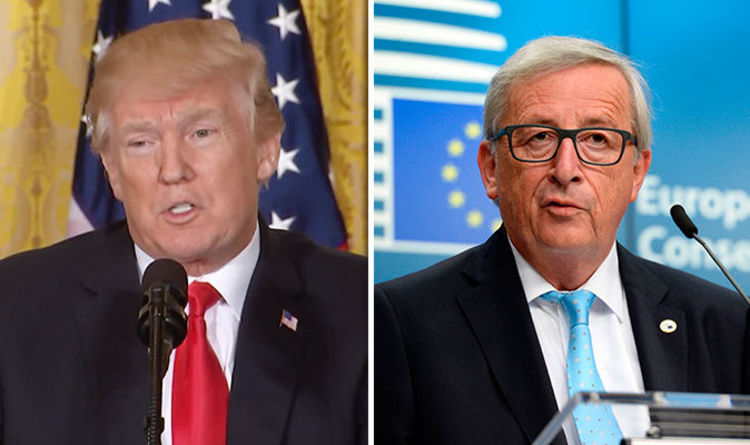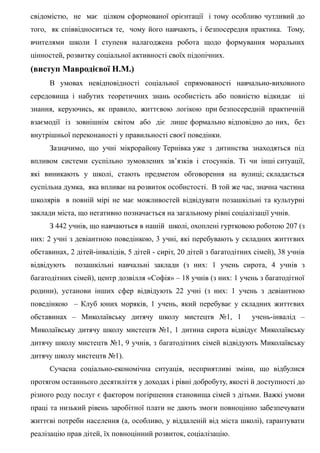Understanding Trump's Aggressive Trade Stance Towards The European Union

Table of Contents
The "America First" Doctrine and its Impact on EU-US Trade Relations
The core of Trump's trade strategy was his "America First" doctrine, a protectionist approach prioritizing American economic interests above multilateral agreements and global cooperation. This philosophy fundamentally altered the relationship between the US and the EU, leading to significant trade disputes and escalating tensions. The prioritization of domestic industries over international partnerships fueled a shift away from established trade norms and agreements.
-
Withdrawal from the Trans-Pacific Partnership (TPP): Trump's decision to withdraw the US from the TPP, a comprehensive trade agreement involving numerous Pacific Rim countries, signaled his rejection of multinational trade pacts and his preference for bilateral deals. This move sent shockwaves through the global trading system and raised concerns about the future of free trade initiatives.
-
Renegotiation of NAFTA (resulting in USMCA): The renegotiation of the North American Free Trade Agreement (NAFTA), culminating in the United States-Mexico-Canada Agreement (USMCA), reflected Trump's desire to reshape trade relationships to benefit the US specifically. While not directly targeting the EU, this demonstrated his willingness to challenge existing trade frameworks.
-
Imposition of tariffs on steel and aluminum imports: The imposition of tariffs on steel and aluminum imports from numerous countries, including the EU, was a major trigger of trade conflicts. These tariffs, justified on national security grounds, sparked retaliatory measures from the EU, impacting sectors like agriculture and automobiles. The EU responded with tariffs on various US products, escalating the trade war.
Specific Trade Disputes and Tariffs Imposed by the Trump Administration
The Trump administration engaged in several high-profile trade disputes with the EU, marked by the imposition of significant tariffs and retaliatory measures. These conflicts deeply impacted various sectors and strained transatlantic relations.
-
The Boeing-Airbus subsidy dispute and the resulting tariffs: This long-standing dispute over alleged illegal subsidies provided to Boeing and Airbus by their respective governments led to a tit-for-tat imposition of tariffs on aircraft and other goods. The economic consequences were substantial, affecting both aerospace manufacturers and related industries.
-
Tariffs on European agricultural products: Trump's administration imposed tariffs on various European agricultural products, including cheese and wine, further straining trade relations and triggering retaliatory measures from the EU. This targeted specific sectors critical to the European economy.
-
Disputes related to digital services taxes: Disagreements over digital services taxes imposed by some EU countries led to threats of retaliatory tariffs from the US, highlighting the challenges of regulating the digital economy in a globalized world. These conflicts underscored the growing complexities of international taxation in the digital age.
The EU's Response to Trump's Aggressive Trade Tactics
Faced with Trump's protectionist measures, the EU responded with a combination of retaliatory tariffs, diplomatic efforts, and a strategic focus on building alliances. The EU's approach aimed to defend its economic interests and uphold the rules-based multilateral trading system.
-
Imposition of countervailing duties on US goods: The EU imposed countervailing duties on various US goods in response to the tariffs imposed by the Trump administration, attempting to level the playing field and mitigate the negative economic consequences. These countermeasures demonstrated the EU's resolve in defending its interests.
-
WTO challenges to US tariffs: The EU challenged the legality of several US tariffs imposed by the Trump administration through the World Trade Organization (WTO), seeking to uphold international trade rules and dispute settlement mechanisms. These legal challenges highlight the importance of international trade regulations.
-
Negotiations and attempts to de-escalate tensions: Despite the escalating tensions, the EU attempted to engage in negotiations with the US to de-escalate trade conflicts and find mutually beneficial solutions. These diplomatic efforts, however, were often hampered by the Trump administration's protectionist stance.
Long-Term Effects of Trump's Trade Policies on the Transatlantic Relationship
Trump's aggressive trade policies left a lasting imprint on the EU-US relationship, extending far beyond the immediate economic impacts. The consequences are multifaceted and will continue to shape transatlantic relations for years to come.
-
Damage to trust and multilateral cooperation: The trade disputes significantly damaged the trust between the US and the EU, undermining the foundation of their strategic partnership and hindering multilateral cooperation on various global issues. Repairing this damaged trust will require significant effort.
-
Increased protectionism and trade barriers: Trump's policies contributed to a rise in protectionism and trade barriers globally, creating uncertainty and hindering the growth of international trade and investment. This environment presents challenges for both the US and the EU.
-
Shifting global trade dynamics: Trump's trade actions spurred a shift in global trade dynamics, with countries seeking alternative trading partners and reevaluating their relationships with the US. This shift necessitates a reassessment of global trade strategies for both the EU and the US.
Conclusion: Understanding and Addressing Trump's Legacy in EU-US Trade
Trump's aggressive trade stance towards the European Union had profound and lasting consequences, marked by significant trade disputes, retaliatory measures, and damage to the transatlantic relationship. The imposition of tariffs, challenges to multilateral agreements, and the prioritization of "America First" significantly altered the dynamics of EU-US trade. Understanding these events is crucial to analyzing current trade relations and navigating future challenges. We must continue to examine the long-term effects of Trump's trade policies and their impact on the EU, including the damage to trust and the rise of protectionism. Analyzing Trump's aggressive trade approach towards the EU and its ripple effects remains a critical task for policymakers and international relations experts. Further research into these complex issues is encouraged, along with active participation in discussions surrounding the ongoing implications of these policies. The current state of EU-US trade relations requires continued monitoring and in-depth analysis to ensure a stable and prosperous future.

Featured Posts
-
 Is News Corp An Undervalued Asset A Deeper Look At Its Business Units
May 25, 2025
Is News Corp An Undervalued Asset A Deeper Look At Its Business Units
May 25, 2025 -
 Escape To The Country Choosing The Right Property For Your Needs
May 25, 2025
Escape To The Country Choosing The Right Property For Your Needs
May 25, 2025 -
 Yevrobachennya Shlyakh Do Slavi Peremozhtsiv Ostannogo Desyatilittya
May 25, 2025
Yevrobachennya Shlyakh Do Slavi Peremozhtsiv Ostannogo Desyatilittya
May 25, 2025 -
 Glastonbury 2025 Lineup Confirmed Acts Include Olivia Rodrigo And The 1975
May 25, 2025
Glastonbury 2025 Lineup Confirmed Acts Include Olivia Rodrigo And The 1975
May 25, 2025 -
 Rethinking Middle Management Their Critical Role In Modern Organizations
May 25, 2025
Rethinking Middle Management Their Critical Role In Modern Organizations
May 25, 2025
